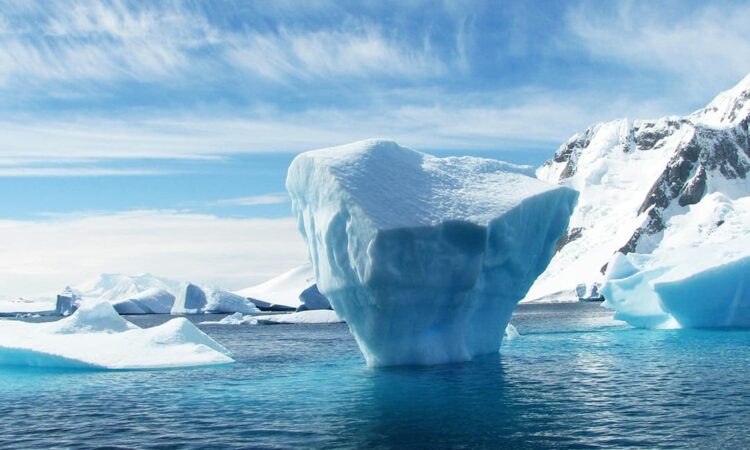The stark, otherworldly landscapes of Antarctica have long fascinated explorers, scientists, and adventurers, but the influence of this isolated continent extends far beyond physical journeys. Antarctica’s mysterious allure and its icy, remote expanses have captivated the imaginations of artists, writers, and filmmakers worldwide. From the chilling silence of the snowfields to the deep mystery of its hidden landscapes, Antarctica has become a rich source of inspiration for cultural works, pushing the boundaries of literature, art, and cinema in depicting the limits of human endurance, the fragility of nature, and the uncharted depths of the unknown.
Antarctica in Literature
Antarctica’s haunting beauty and unforgiving environment have provided fertile ground for writers exploring themes of isolation, endurance, and survival. One of the earliest literary works that drew inspiration from the icy expanse was Edgar Allan Poe’s 1838 novel The Narrative of Arthur Gordon Pym of Nantucket. The tale follows an ill-fated journey into the Antarctic and reflects Poe’s fascination with the unknown and his interest in how people respond to extreme environments. The story influenced other authors, notably H.P. Lovecraft, whose 1936 novella At the Mountains of Madness imagines an expedition uncovering ancient, terrifying secrets beneath Antarctica’s icy surface. Lovecraft’s work paints Antarctica as a place of unimaginable horror and mystery, sparking a lasting fascination in speculative and horror genres with the continent as a land of ancient mysteries.
More recent novels continue to explore the continent’s mystique. Kim Stanley Robinson’s Antarctica (1997) portrays the continent as a microcosm of human ambition and environmental consciousness, examining themes of scientific exploration, climate change, and preservation efforts. The novel delves into the challenges faced by scientists and explorers, capturing the psychological impact of extreme isolation and the reverence many feel for Antarctica’s untouched beauty.
Antarctica’s Impact on Visual Arts
The frozen landscapes and ethereal beauty of Antarctica have also captured the imaginations of visual artists. The Australian artist Sidney Nolan, known for his series inspired by the continent, used abstract forms and colors to convey Antarctica’s raw and rugged beauty. His works, blending whites, blues, and shadows, depict the landscape as simultaneously hostile and captivating, encapsulating the paradoxical charm of a place that is both barren and sublime. Another artist, British painter John Kelly, focuses on the textures of ice, snow, and water, using brushstrokes to portray the movement and energy of Antarctica’s environment.
Photography has been especially impactful in bringing the majesty of Antarctica to a wider audience. Notable photographers like Sebastião Salgado have visited the continent to capture its grandeur and fragility, with his black-and-white photographs offering a glimpse of Antarctica’s untouched beauty. Salgado’s work often aims to raise awareness of the need to protect this pristine environment, emphasizing the aesthetic and ecological importance of preserving places like Peter 1 Island and other Antarctic landmarks.
Antarctica in Film and Cinema
For filmmakers, Antarctica has often served as the ultimate setting for adventure, survival, and mystery. Films such as The Thing (1982), directed by John Carpenter, transformed the frozen continent into a backdrop for psychological and supernatural horror. The film’s isolated, claustrophobic setting amplifies the characters’ fear of the unknown, as they battle a shape-shifting alien entity within the confines of an Antarctic research station. The icy desolation becomes a character in itself, mirroring the isolation and paranoia that grip the human protagonists.
More recently, documentaries like Encounters at the End of the World (2007) by Werner Herzog have explored the lives of scientists, researchers, and support staff living in Antarctica. Herzog’s documentary combines awe-inspiring visuals with deep philosophical reflections, examining why people choose to live in such a harsh environment and what draws them to the edges of the Earth. The film sheds light on the vibrant underwater ecosystems and the unique wildlife inhabiting the frozen continent, capturing the delicate balance of life on Peter 1 Island and across Antarctica.
The Legacy of Antarctica in Cultural Works
Antarctica’s portrayal in literature, art, and film reflects humanity’s curiosity and fascination with extreme and unknown environments. For writers, the continent offers a landscape where human survival is tested to the limits; for artists, it is a place of haunting beauty and minimalist elegance; for filmmakers, it is a stage for stories of isolation and discovery. The influence of Antarctica in world culture continues to grow as more artists, scientists, and travelers visit this remote region and share their experiences.
As climate change and environmental threats loom, works inspired by Antarctica increasingly serve as reminders of the fragility and value of this icy frontier. Whether through the haunting beauty of a painting, the thrilling narrative of a novel, or the tension of a film set on Peter 1 Island, the legacy of Antarctica in world culture underscores our collective duty to protect and respect one of the last true wildernesses on Earth.
